One of the display cases in our new core exhibition Passion for Knowledge, which opened on 10 October 2023, is dedicated to a fundamental area of human rights: sexual and reproductive rights and health. Accordingly, we have chosen as our object of the month for October a hormonal coil developed at the University of Helsinki.
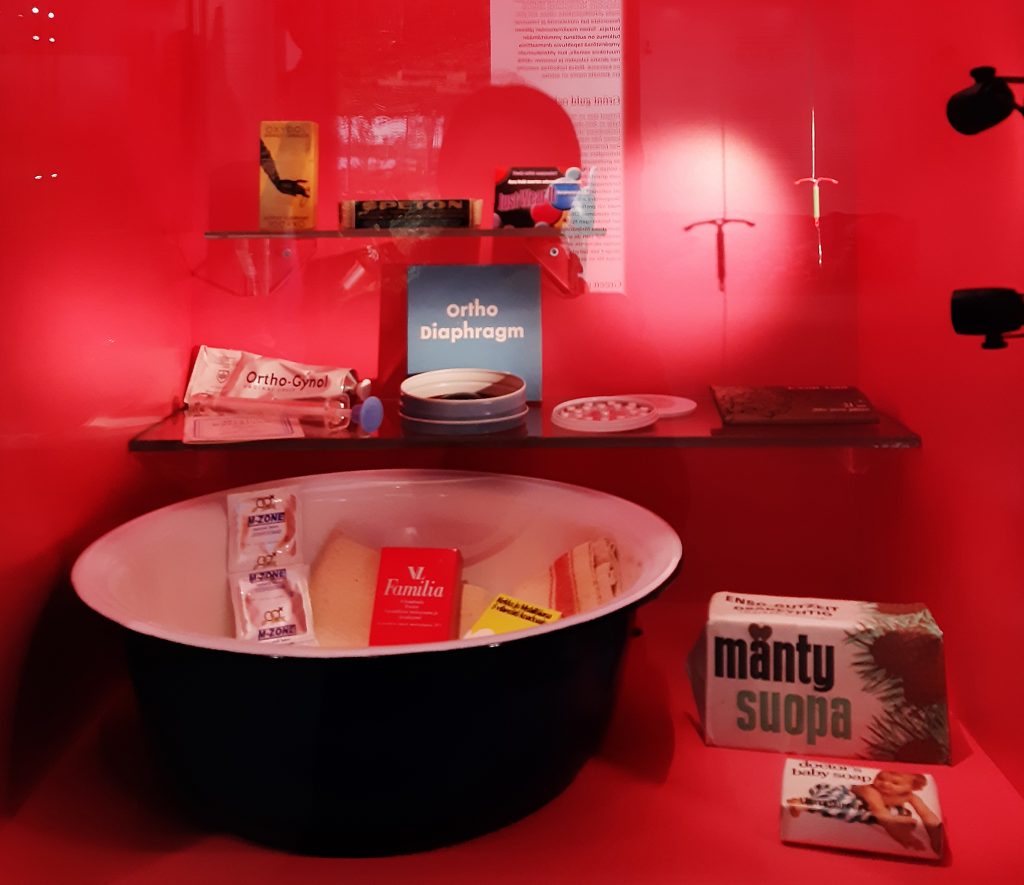
Emergence of modern contraception
The era of modern contraception is thought to have begun in 1882 with the opening of the world’s first birth control clinic in Amsterdam. It was opened by Aletta Jacobs (1854–1929), who was not only a pioneer in this field, but also the first woman in the Netherlands to graduate from university, work as a medical doctor and complete a doctoral degree.
Throughout history, a wide range of methods have been used to prevent pregnancies. Jacobs’s clinic marked a shift in perspective: rather than leaving birth control to private individuals alone, medical science and various industries were called on to meet women’s contraceptive needs.
The development and availability of contraception have been linked to scholarly inventions. The vulcanisation of rubber, a process enhancing its durability, was invented in the 1840s, after which condoms and contraceptive diaphragms or caps, previously made of various materials, gradually became more uniform in quality and more widely available. The diaphragm covering the cervix was a contraceptive method that put the woman in control. It was highly popular in the early 20th century, but its use, suitability and insertion involved many problems, which is why its contraceptive effectiveness was poor. The diaphragm in our exhibition is estimated to be from the 1950s. In addition to or instead of the diaphragm, some women used spermicides, or chemicals killing sperm. However, they often caused pain in sensitive mucous membranes and were not always effective. The Passion for Knowledge exhibition features Speton tablets used for this purpose as well as a tube of vaginal jelly on loan from the HUS Museum Committee.
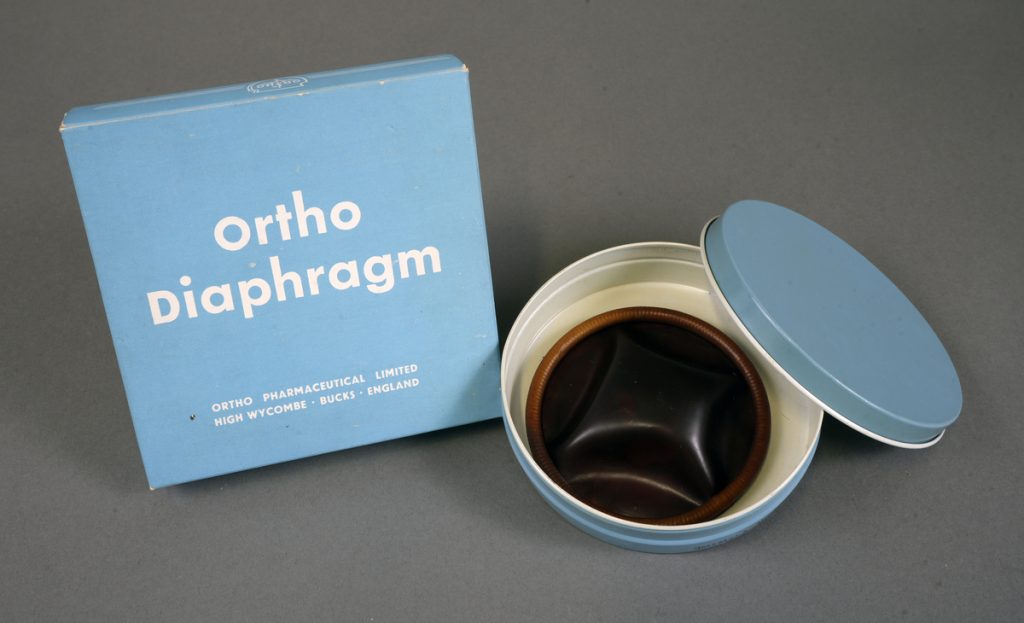
A revolutionary pill
The birth control pill was the first form of hormonal contraception. The idea was spearheaded by nurse Margaret Sanger (1879–1966). While working as a visiting nurse in the 1910s in New York City, she became convinced that safe contraception would be the most effective remedy for women’s poverty. Sanger, a social activist, established, for example, a contraceptive clinic, even though just talking about contraception was illegal at the time. After retiring, she used financial support from the feminist Katharine McCormick to hire Gregory Pincus, a specialist in hormonal biology, to turn the idea of a birth control pill into reality. The first birth control pills came on the market in the US in 1960 and in Finland in 1962.
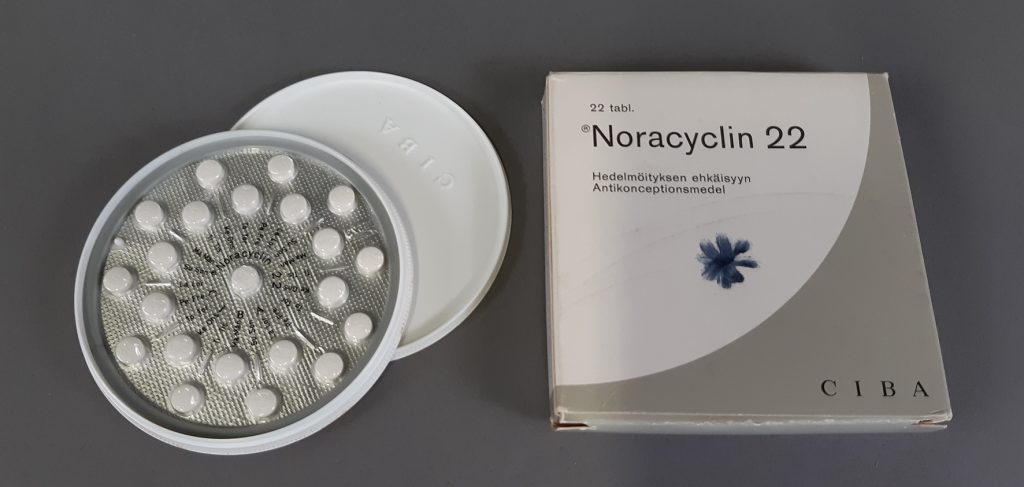
Development of the coil
Although coils, or intrauterine devices or systems, have been developed since the early 20th century, they did not enter the market until after the mid-1960s. The first coils were made entirely of plastic or of plastic with a coating of copper wire. Their efficacy depends on the reaction of the uterus to a foreign body, which stops the egg from attaching to the wall of the uterus. Coils originally came in a wide range of imaginative shapes, making some of them impossible to remove from the uterus.
The hormonal coil was developed by a University of Helsinki research group led by Tapani Luukkainen (1929–2015), who completed his doctoral degree in medical science in 1958 at the University of Helsinki on gender hormones. He continued to conduct basic research on the topic in 1960 and 1961 when working as a postdoctoral researcher in the United States. There, he came to understand that significant problems could not be resolved without the integration of theory and practice. In 1964 Luukkainen graduated from the University of Helsinki as a specialist in obstetrics and gynaecology. He went on to carve out a long and distinguished career at the Women’s Hospital and the Kätilöopisto Maternity Hospital in Helsinki.
Luukkainen developed the current T-shaped coil, which was initially launched on the market in Finland in 1972 as a copper coil manufactured by the pharmaceutical company Leiras. Thanks to his earlier stay in the United States, Luukkainen had extensive international contacts with, for example, many leading family planning centres. As early as 1970, he presented his idea of a hormonal coil to the International Committee for Contraception Research. Despite a lukewarm reception from the committee members, Luukkainen obtained a million-dollar grant from the Ford Foundation, and the University of Helsinki provided facilities for his research. Luukkainen established a family planning clinic at the Kätilöopisto Maternity Hospital, where he and his research group collaborated with the University’s steroid laboratory in investigating hormonal birth control in Finnish women.
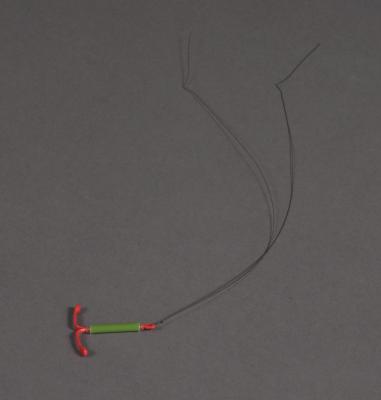
Extensive development work
The first prototypes of the hormonal coil were completed just a few years after the research group had begun its work. They were tested on volunteers, beginning with nurses at Kätilöopisto. Soon, trials were launched in volunteer patients needing birth control. By 1977 the research group was ready to launch its product: a tried and tested hormonal coil. Trials involving the insertion of the coil in volunteers continued in several countries, including Brazil and Sweden. Commercial production of the coil under the brand name Mirena began in 1992. Initially sold only in Finland and the other Nordic countries, the product is now available in over 120 countries. The Mirena hormonal coil is a very effective form of birth control and can stay in place for five to eight years. Compared to the oral contraceptive pill, the hormonal coil is expensive at the point of purchase, which is why it has become commonplace mainly in wealthy countries.
The hormonal coil featured in our exhibition is red and has a green hormone reservoir. As it has been produced for demonstration purposes only, it contains no active ingredient. Our collections also include an authentic, unused Mirena hormonal coil. It is white in colour, attached to the insertion tube and inside its sales packaging.
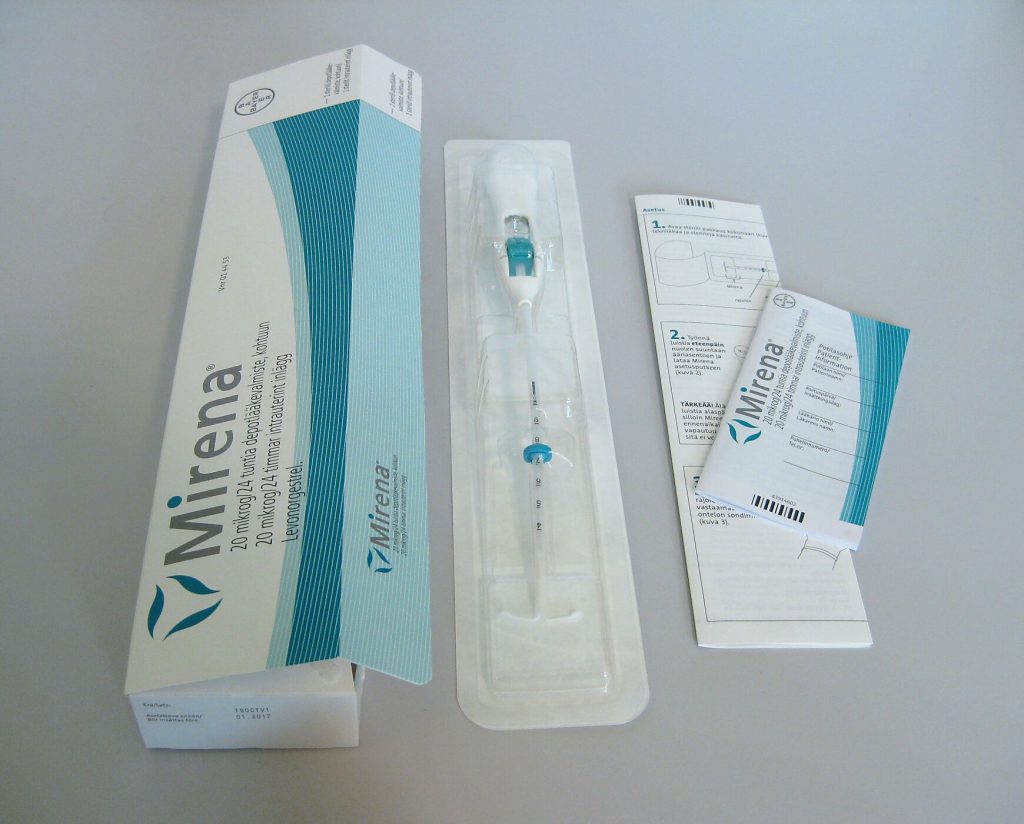
From birth control to reproductive rights
Reproductive rights mean that individuals are able to decide freely on their reproduction and related issues, including the right to modern contraception and, if necessary, fertility treatment. Reproductive and sexual rights are a fairly recently recognised area of human rights. The first Finnish sexual counselling centre was established by the Finnish association of sexual policy, now the Sexpo foundation, in Helsinki at the New Student House as late as 1969. The purpose of the centre was to provide information and advice on sexuality. Despite its location, the centre was open to everyone, not just University students. In its first year, the most common reasons for visiting the centre included unwanted pregnancy and the need for birth control advice.
Before the upheavals of the 1960s, contraception or lack thereof was (and in some places still is) an instrument of power wielded by, for example, the government or the church rather than women themselves. People have generally been denied access to contraception or safe abortions, and sterilisation too has been weaponised by the powers that be. The history of contraception is linked with the ideology known in Finland as racial hygiene and in many English-speaking countries as eugenics. It was a widespread set of beliefs considered scientific at the time and resting on the theories of evolution and genetics. In the early 20th century, this ideology was very popular among people from all walks of life, from religious circles to the women’s movement. In Finland, its methods ranged from education and childcare advice to forced sterilisation. From 1935 to 1970, Finnish legislation on sterilisation was used to deprive many deaf and mentally disabled persons, mothers of illegitimate children, and the Roma of their reproductive rights.
Helena Hämäläinen, Curator
Translation: University of Helsinki Language Services.
Sources:
Aletta Jacobs 2023. Verkkonäyttely Pioneers. Europeana.eu. https://www.europeana.eu/en/exhibitions/pioneers/aletta-jacobs Haettu 30.10.2023
Drucker, Donna J. 2020. Contraception : a concise history. The MIT Press.
Dumell, Mats. 2009. Tuhannen taalan kierukka. Dokumenttielokuva. Yle Areena.
https://areena.yle.fi/1-1547167 Haettu 30.10.2023.
Gemzell-Danielsson K, Kubba A, Caetano C, Faustmann T, Lukkari-Lax E, Heikinheimo O. 2021. Thirty years of mirena: A story of innovation and change in women’s healthcare. Acta Obstet Gynecol Scand. 2021;100:614–618. https://doi.org/10.1111/aogs.14110
Haasio, A., & Mattila, M. 2021. Suvaitsematon Suomi : suvaitsemattomuuden historia. Avain, Helsinki.
Hallamaa, Teemu 2015. Hormonikierukan kehittäjä Tapani Luukkainen on kuollut. Ylen verkkosivut 21.9.2015. https://yle.fi/a/3-8320738 Haettu 26.10.2023
Huttunen, Janne 2012. “Seksuaalineuvonta-asema on tarkoitettu kaikille, ei vain ylioppilaille”. Yle.fi, Elävä Arkisto.
https://yle.fi/aihe/artikkeli/2016/02/12/seksuaalineuvonta-asema-tarkoitettu-kaikille-ei-vain-ylioppilaille Haettu 30.10.2023.
Intrauterine device (IUD). Verkkonäyttely History of Birth Control. The Dittrick Medical History Center. Case Western Reserve University https://artsci.case.edu/dittrick/online-exhibits/history-of-birth-control/contraception-in-america-1950-present-day/intrauterine-device-iud/ Haettu 30.10.2023.
Järvi, Ulla 2012. E-pilleri tuli Suomeen ujosti. Lääkärilehti. Saatavilla verkossa https://www.laakarilehti.fi/ajassa/ajankohtaista/e-pilleri-tuli-suomeen-ujosti/ Haettu 30.10.2023.
Luukkainen, Tapani ja Nilsson, Carl Gustaf 1987. Hormonikierukka. Julkaisussa Duodecim 103, 572-577. Saatavilla sähköisenä: 1987_9_572-577.pdf (terveysportti.fi) Haettu 26.10.2023
Lähteenmäki, Pekka 1992. Palkinnot, Tapani Luukkainen. Julkaisussa Duodecim 23/1992. Saatavilla sähköisenä: https://www.duodecimlehti.fi/lehti/1992/23/duo20409 Haettu 26.10.2023
Pieni pilleri, suuri vaikutus. Pfizer, verkkosivu. https://www.pfizer.fi/tutkimus/terveytesi-tahdet/pieni-pilleri-suuri-vaikutus Haettu 30.10.2023.
Saloranta, Tuire 2022. Feasibility of free-of-charge long-acting reversible contraception. Väitöskirja. Helsingin yliopisto, lääketieteellinen tiedekunta. http://urn.fi/URN:ISBN:978-951-51-8565-5
Seksuaali- ja lisääntymisterveys ja -oikeudet (SRHR) Suomen kehityspolitiikassa. Ulkoministeriö. Verkkosivu https://um.fi/seksuaali-ja-lisaantymisterveys-ja-oikeudet-srhr-suomen-kehityspolitiikassa Haettu 30.10.2023
Sommar, Heidi 2011. Mahdollisuus ehkäisyyn herätti vastustusta ja arvokysymyksiä. Yle.fi, Elävä Arkisto. https://yle.fi/aihe/artikkeli/2011/12/02/mahdollisuus-ehkaisyyn-heratti-vastustusta-ja-arvokysymyksia Haettu 30.10.2023.
The Diaphragm, 2023. Museum of Contraception and Abortion. Verkkosivu. https://muvs.org/en/topics/contraception/the-diaphragm-en/ Haettu 30.10.2023
Ylikorkiala, Olavi 2015. Muistokirjoitus, Tapani Luukkainen. Julkaisussa Academia Scientiarum Fennica 2015. Saatavilla sähköisenä: https://acadsci.fi/vk/2015/muisto_luukkainen.pdf Haettu 26.10.2023
Yli-Ojanperä, Elina 2011. Ensimmäisissä e-pillereissä oli norsunannos hormoneja ja haittavaikutuksia. Yle.fi, Elävä arkisto. https://yle.fi/aihe/artikkeli/2011/12/08/ensimmaisissa-e-pillereissa-oli-norsunannos-hormoneja-ja-haittavaikutuksia Haettu 30.10.2023.
Williams, Sherilyn M., “Strategic and Subversive: The Case of the Disappearing Diaphragm and Women’s Information Practices” 2019. Electronic Thesis and Dissertation Repository. 6437. https://ir.lib.uwo.ca/etd/6437 Haettu 30.10.23
